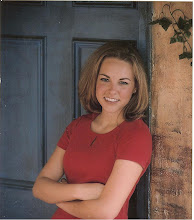
The voice box is composed of two large pieces of cartilage. The first cartilage is called the cricoid. The cricoid means ring, because it is shaped like a signet ring. It’s flat, rectangular plate extends upwards at the back. The next big cartilage is called the thyroid. This cartilage means “shield”. It is V-shaped consisting of two sides (lamina/wings) that are fused at the front. The opening at the back of the thyroid is filled by the plate of the cricoid. There is a point of the thyroid cartilage that protrudes under the skin of the throat recognized as the Adam’s apple. Also on the thyroid cartilage, two horns rise from the outer sides at the top of the cartilage called the superior cornua. At the outer bottom edge of the thyroid cartilage are two more horns called the inferior cornua. These are shorter than the superior cornua. The inferior cornua are attached to the sides of the cricoid by ligaments and muscles that form a pivot not very far from the flat plate of the cricoid ring. This partially fills the space at the back of the thyroid. Near the corners of this plate, on the top edge of the cricoid, are two very important cartilages called the arytenoids. These two cartilages are attached on each side.
Each arytenoids has three processes. Each process extend forward toward the thyroid notch, called the vocal or glottal process. On the outer sides of the arytenoids are the muscular processes. The front of the arytenoids are the vocal processes, and the top of the arytenoids are considered the Apex. Sitting above the Apex is a small horn-like structure or cartilage called the corniculate cartilages. It is also considered the cartilage of Santorini, after it’s discoverer.
The only bone of the larynx is the hyoid bone. This bone is located above the thyroid, in the base the tongue. The hyoid bone is U-shaped and the voice box hangs from it.. The epiglottis is a leaf-shaped lid that closes the voice box. This prevents from food or water from getting into our air passages.
The crico-thyroid articulation involves the inferior cornua of the thyroid in the synovial joint with the rear sides of the cricoid. The thyroid rocks on top of the cricoid. This stretches the vocal cords. In the crico-arytenoids articulation two ridges on top of the signet portion of the cricoid form almost right angles to each other. The arytenoids are able to articulate in a rocking or gliding motion in the synovial joint. When the arytenoids rock forward, the vocal processes touch. There are four possible positions for the arytenoids…
* Completely abducted (opened)-slid apart, rocked back
*Completely adducted (closed)-slid together, rocked forward
*Partially adducted-slid together, rocked back
*Partially adducted-slid apart, rocked forward
Last but not least, the most important ligament is called the conus elasticus. This ligament arises from the upper oval edge of the cricoid and attaches to the notch of the thyroid on one end, and also to the underside of the arytenoids which include the vocal processes. The conus elasticus is split, so when the arytenoids separate the slit is able to open. The slit is known as the glottis. The conus is also known as a heavy protective skin for the underside of the vocal folds. Parts of the conus elasticus include the cricothyroid ligament which happens to be located at the front part of the conus, running between the angle of the thyroid and the front part of the cricoid. The edges of the glottis are also thicker than the rest of the conus, and are considered the vocal ligaments.
Muscles
The thyroarytenoid muscles arise from the underside of the arytenoids, run along the length of the vocal processes and vocal ligament and attach to the notch of the thyroid. The thyroarytenoid forms the vocal folds with the help of the vocal ligament.
These muscles can vibrate with the vocal ligament, and can vary the type of vibration. The thyroid arytenoids muscles can also pull the thyroid toward the arytenoids.
*The internal thyroarytenoids are know as the true vocal folds, or vocalis muscles.
-connect vocal process and rock the tips of the arytenoids forward.
*The external thyroarytenoids are ventricular bands also known as the false vocal folds.
There are also muscles called the Cricoarytenoid muscles.
The lateral cricoarytenoids arise from the cricoid and attach to the muscular processes of the arytenoids. This rocks the arytenoids forward and the tips are able to touch.
The postural cricoarytenoids arise from cricoid and attach to ___________ processes of the arytenoids. These muscles pull the arytenoids apart. It is also considered a muscle of opposition to the interarytenoids.
The interarytenoids are considered to be transverse or oblique. These muscles pull the arytenoids together. They attach arytenoids to arytenoids in the back and help them slide close together.
Cricothyroids arise from middle of the front of the cricoid, and attach to the bottom edge of the thyroid. These muscles rock the thyroid forward in relation to the arytenoids when flexed. They also stretch the vocal ligament which changes the pitch by raising it.






No comments:
Post a Comment